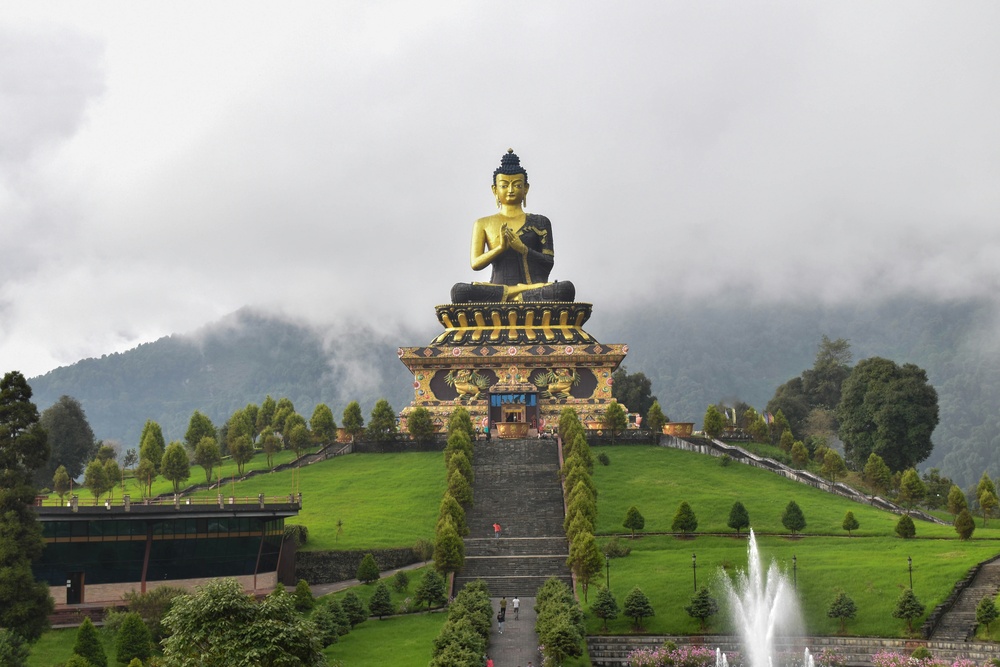Tucked within the majestic folds of the Eastern Himalayas, Sikkim is one of India’s most ecologically diverse states. Despite its small size, the state boasts an exceptional variety of flora and fauna, making it a paradise for nature lovers and wildlife enthusiasts. From elusive red pandas to rare Himalayan birds, the wilderness of Sikkim is a treasure trove of biodiversity. The popular wildlife sanctuaries in Sikkim offer immersive experiences into these untouched natural habitats, filled with alpine forests, rhododendron groves, and misty valleys.
In this article, we’ll take you through the top 5 popular wildlife sanctuaries in Sikkim that every nature lover must visit.
1. Fambong Lho Wildlife Sanctuary – A Gateway to Sikkim’s Natural Riches
Location: East Sikkim, 25 km from Gangtok
Area: 51.76 sq. km
Best Time to Visit: March to May and October to December
Just a short drive from Gangtok, Fambong Lho Wildlife Sanctuary is a lush haven for birdwatchers, hikers, and biodiversity lovers. Covered in dense forests of oak, rhododendrons, and bamboo, the sanctuary is a biodiversity hotspot that houses rare Himalayan species.
Wildlife highlights: Red panda, Himalayan black bear, barking deer, yellow-throated marten, and over 200 bird species including the satyr tragopan and fire-tailed sunbird.
Activities: Trekking to Tinjurey Viewpoint, birdwatching, and forest camping. Its proximity to the capital makes it a perfect day trip for nature lovers.
2. Maenam Wildlife Sanctuary – The Medicinal Forest Trail
Location: South Sikkim, near Ravangla
Area: 36.34 sq. km
Best Time to Visit: March to June and September to November
Situated at an altitude of over 3,000 meters, Maenam Wildlife Sanctuary is known for its rich repository of medicinal plants and breathtaking views of the Teesta River and Kanchenjunga ranges. Dense forests and pristine trails make it one of the most popular wildlife sanctuaries in Sikkim for trekking and wildlife spotting.
Wildlife highlights: Red panda, leopard cat, goral, serow, and Himalayan black bear. The sanctuary is also rich in rare orchids and herbal plants.
Activities: The Maenam trek to the peak and the Maenam Gompa is a spiritual and ecological journey through a peaceful Himalayan forest.
3. Barsey Rhododendron Sanctuary – A Floral Wonderland
Location: West Sikkim, near Hilley
Area: 104 sq. km
Best Time to Visit: March to April (Rhododendron blooming season)
Known for its stunning rhododendron forests that burst into a riot of colors in spring, the Barsey Rhododendron Sanctuary is a favorite among photographers and trekkers. Part of the Singalila Range, it offers unmatched views of snow-capped peaks and colorful alpine flora.
Wildlife highlights: Red panda, Himalayan black bear, wild boar, and vibrant bird species like the kalij pheasant and minivets.
Activities: The Hilley–Barsey trek is an easy yet scenic route perfect for beginners and flower enthusiasts. This sanctuary is particularly magical during the flowering season when it transforms into a living canvas of color.
4. Kyongnosla Alpine Sanctuary – High-Altitude Beauty and Rare Wildlife
Location: East Sikkim, near Tsomgo Lake
Area: 31 sq. km
Best Time to Visit: May to October
Located en route to Nathula Pass and close to the famous Tsomgo Lake, Kyongnosla Alpine Sanctuary is a high-altitude sanctuary offering dramatic landscapes and rare alpine flora and fauna. Its rugged terrain and snow-clad peaks provide shelter to some of the most elusive Himalayan animals.
Wildlife highlights: Snow leopard, Himalayan blue sheep, Tibetan wolf, blood pheasant, and snow partridge.
Activities: Scenic drives, wildlife photography, and exploration around Tsomgo Lake. The sanctuary is perfect for those looking to combine adventure with wildlife exploration.
5. Pangolakha Wildlife Sanctuary – The Untouched Eastern Wilderness
Location: East Sikkim, near Zuluk and Dzuluk Loop
Area: 124 sq. km
Best Time to Visit: April to June and October to November
Bordering Bhutan and Arunachal Pradesh, Pangolakha Wildlife Sanctuary is one of the least explored yet most biologically rich sanctuaries in Sikkim. Its varied altitude supports dense forests, alpine meadows, and high mountain lakes.
Wildlife highlights: Red panda, clouded leopard, Himalayan musk deer, and numerous migratory and endemic bird species. It is also recognized as an Important Bird Area (IBA).
Activities: Trekking, birdwatching, and scenic drives through the Pangolakha Pass and the Zuluk Loop. This sanctuary offers solitude and untouched beauty, perfect for serious wildlife enthusiasts and photographers.
Why These Sanctuaries Are a Must-Visit for Nature Lovers
The popular wildlife sanctuaries in Sikkim are more than just protected zones—they are living classrooms of nature and ecological wonder. Here’s why they stand out:
- Unmatched Biodiversity: These sanctuaries are home to rare and endangered species like the red panda, snow leopard, and hundreds of exotic birds.
- Pristine Environments: Unlike many commercialized national parks, Sikkim’s sanctuaries are quiet, clean, and uncrowded, preserving the authenticity of the wilderness.
- Cultural Integration: Many sanctuaries are located near ancient monasteries and traditional villages, offering a blend of nature and local culture.
- Sustainable Eco-Tourism: Most sanctuaries promote responsible travel through local guides, eco-lodges, and conservation education.
Tips for Visiting Sikkim’s Wildlife Sanctuaries
- Permit Requirements: Some sanctuaries, especially those near the border, require inner line permits. Always check in advance.
- Pack Accordingly: Carry warm clothes, trekking shoes, reusable water bottles, binoculars, and basic medical supplies.
- Hire Local Guides: This supports the community and ensures you get accurate information and safe routes.
- Respect Nature: Avoid plastic, do not litter, and maintain silence during wildlife sightings.
Final Thoughts
The top 5 popular wildlife sanctuaries in Sikkim offer more than just a chance to see animals—they provide a deep connection to the Himalayas, its culture, and its untouched beauty. From the rhododendron blooms of Barsey to the alpine serenity of Kyongnosla, every sanctuary has its own story and charm. For nature lovers seeking a soulful and adventurous retreat, there’s no better destination than the wild heart of Sikkim.



